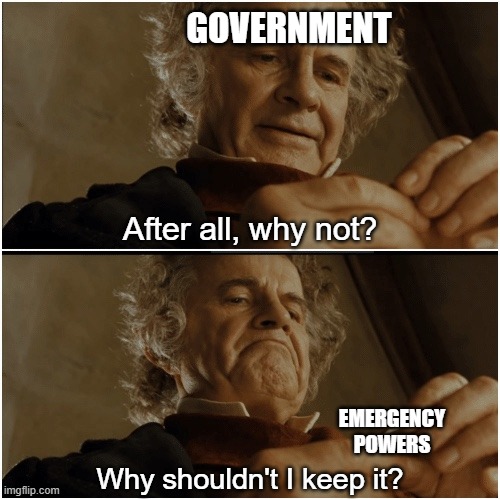In City Journal, John Tierney explains why western governments’ almost universal grabbing of extraordinary powers was the worst possible way to handle the public health crisis of the Wuhan Coronavirus:
Long before Covid struck, economists detected a deadly pattern in the impact of natural disasters: if the executive branch of government used the emergency to claim sweeping new powers over the citizenry, more people died than would have if government powers had remained constrained. It’s now clear that the Covid pandemic is the deadliest confirmation yet of that pattern.
Governments around the world seized unprecedented powers during the pandemic. The result was an unprecedented disaster, as recently demonstrated by two exhaustive analyses of the lockdowns’ impact in the United States and Europe. Both reports conclude that the lockdowns made little or no difference in the Covid death toll. But the lockdowns did lead to deaths from other causes during the pandemic, particularly among young and middle-aged people, and those fatalities will continue to mount in the future.
“Most likely lockdowns represent the biggest policy mistake in modern times,” says Lars Jonung of Lund University in Sweden, a coauthor of one of the new reports. He and two fellow economists, Steve Hanke from Johns Hopkins University and Jonas Herby of the Center for Political Studies in Copenhagen, sifted through nearly 20,000 studies for their book, Did Lockdowns Work?, published in June by the Institute for Economic Affairs (IEA) in London. After combining results from the most rigorous studies analyzing fatality rates and the stringency of lockdowns in various states and nations, they estimate that the average lockdown in the United States and Europe during the spring of 2020 reduced Covid mortality by just 3.2 percent. That translates to some 4,000 avoided deaths in the United States — a negligible result compared with the toll from the ordinary flu, which annually kills nearly 40,000 Americans.
Even that small effect may be an overestimate, to judge from the other report, published in February by the Paragon Health Institute. The authors, all former economic advisers to the White House, are Joel Zinberg and Brian Blaise of the institute, Eric Sun of Stanford, and Casey Mulligan of the University of Chicago. They analyzed the rates of Covid mortality and of overall excess mortality (the number of deaths above normal from all causes) in the 50 states and the District of Columbia. They adjusted for the relative vulnerability of each state’s population by factoring in the age distribution (older people were more vulnerable) and the prevalence of obesity and diabetes (which increased the risk from Covid). Then they compared the mortality rates over the first two years of the pandemic with the stringency of each state’s policies (as measured on a widely used Oxford University index that tracked business and school closures, stay-at-home requirements, mandates for masks and vaccines, and other restrictions).
The researchers found no statistically significant effect from the restrictions. The mortality rates in states with stringent policies were not significantly different from those in less restrictive states. Two of the largest states, California and Florida, fared the same — their mortality rates both stood at the national average — despite California’s lengthy lockdowns and Florida’s early reopening. New York, with a mortality rate worse than average despite ranking first in the nation in the stringency of its policies, fared the same as the least restrictive state, South Dakota.




